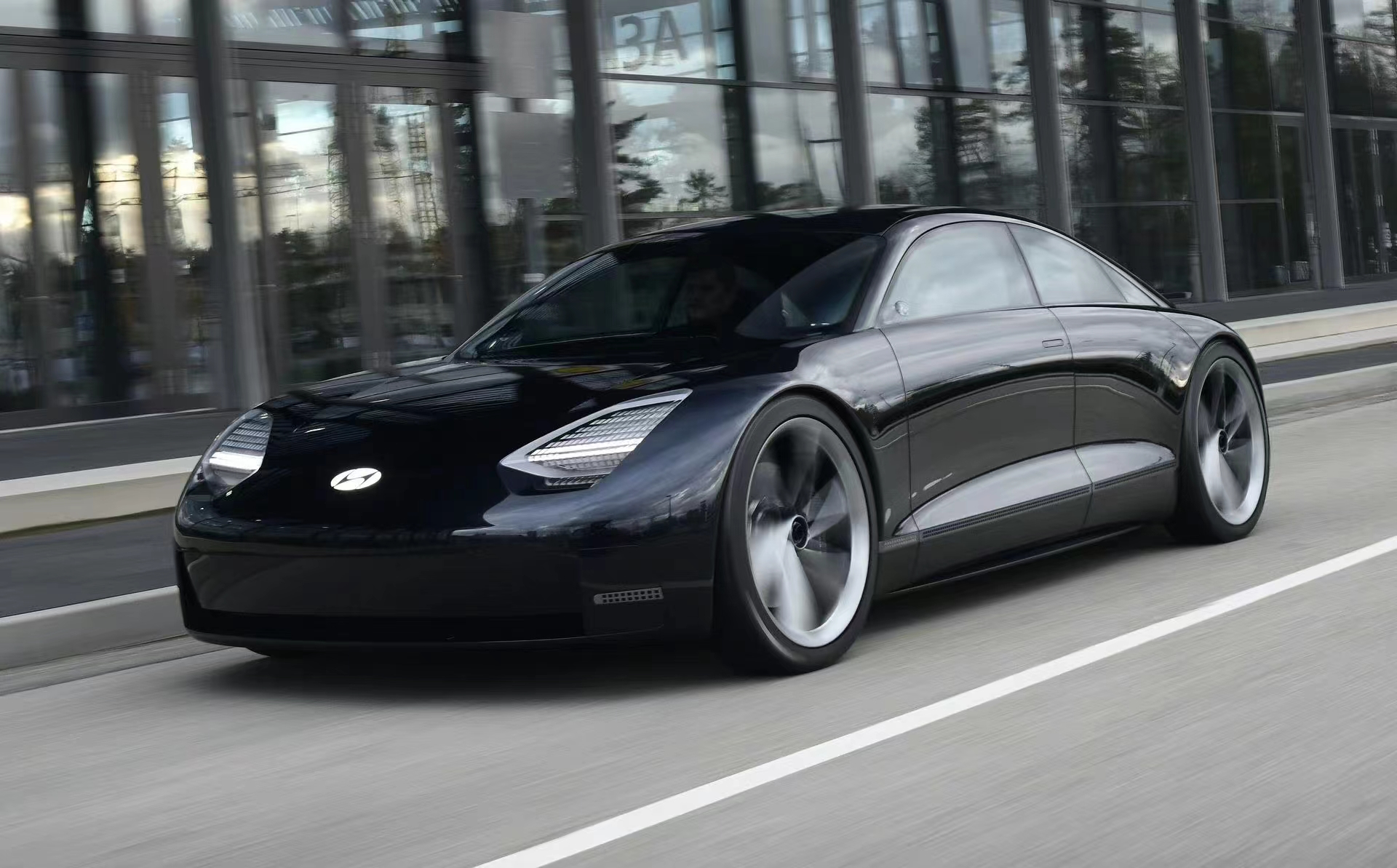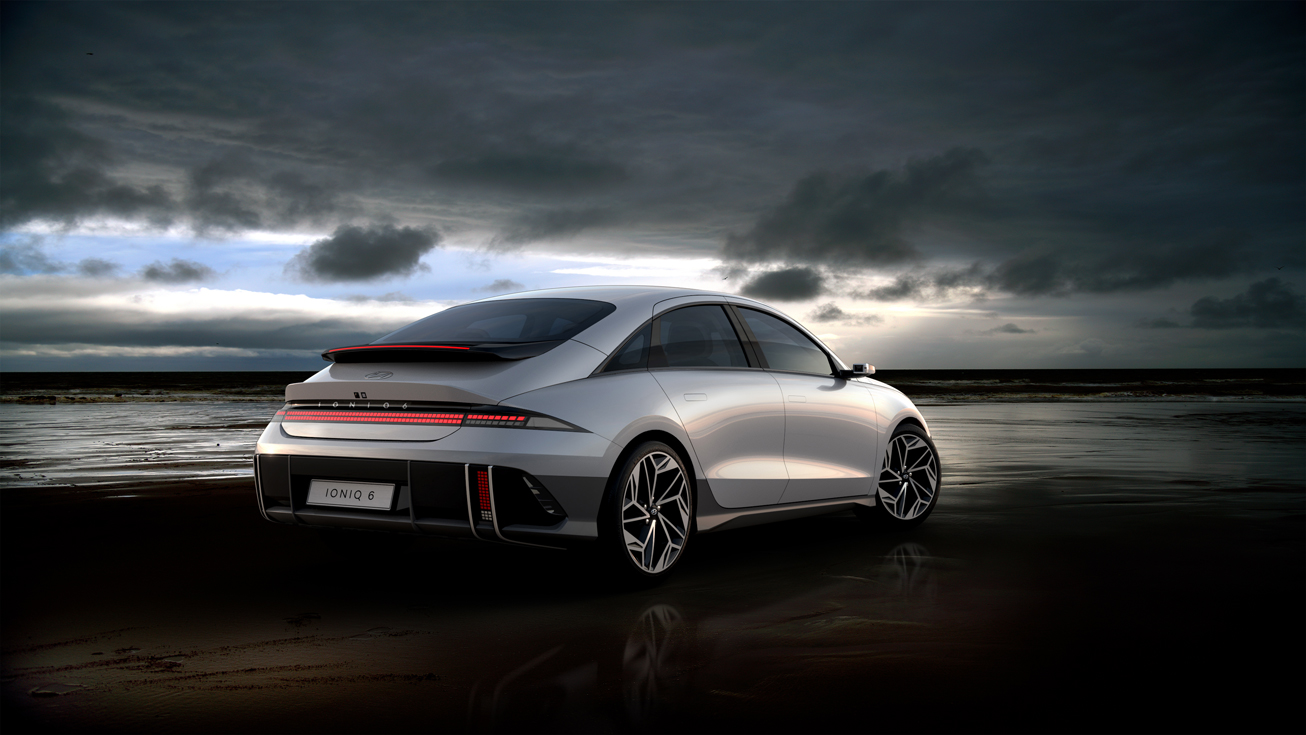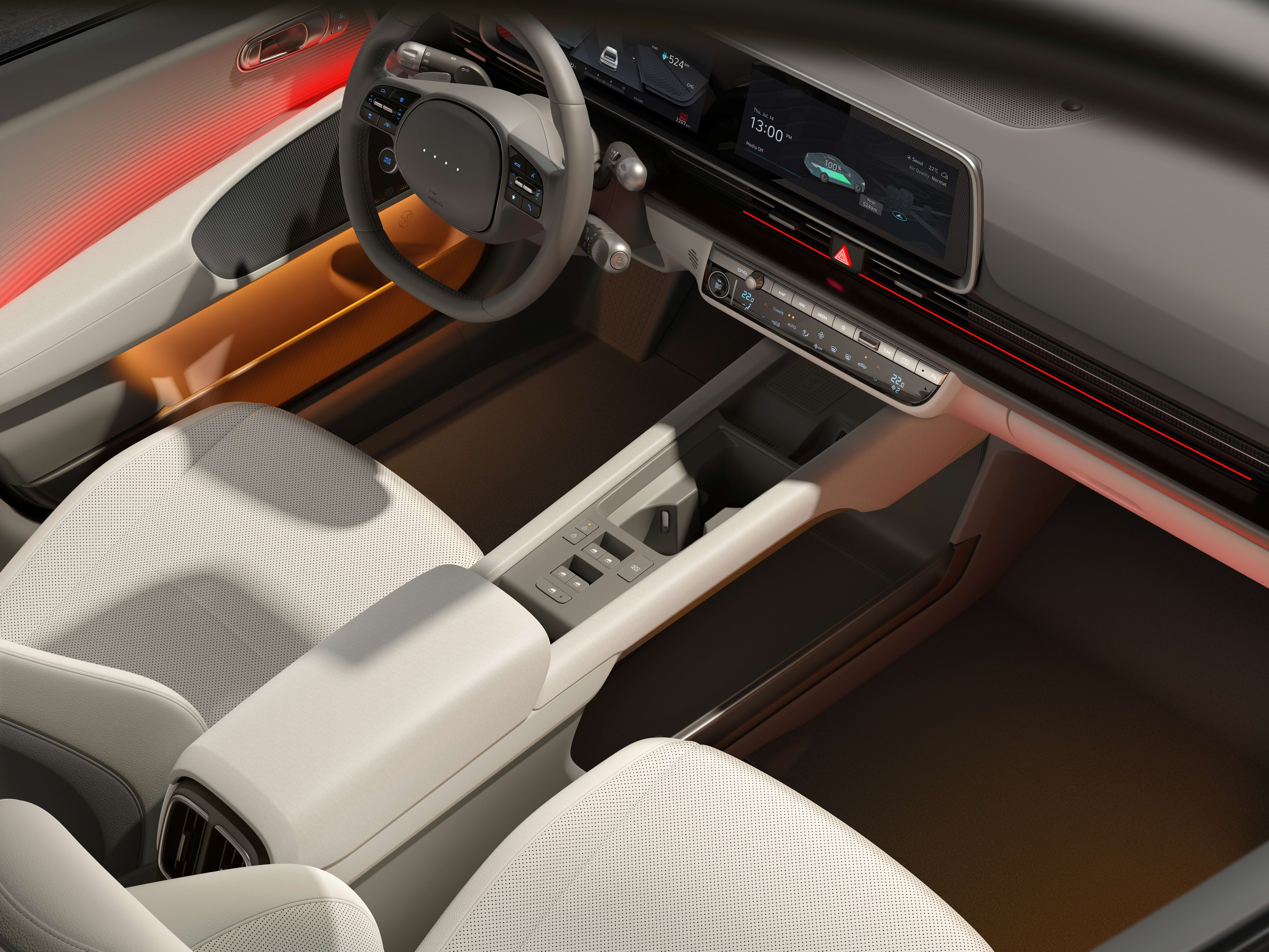On July 14th, IONIQ, the pure electric vehicle brand under Hyundai, officially launched its second model, the IONIQ 6, globally online. Obviously, Hyundai has become a leader in electrification transformation among traditional automobile enterprises. In North America, the sales of IONIQ 5 are second only to the existence of Model 3.
What are the highlights of the higher-level IONIQ 6 that they bring this time?
Slightly Regrettable, Not as Beautiful as the Concept Car
In June, IONIQ released a set of concept car renderings of the IONIQ 6. After seeing these two pictures, the only thing in my mind was “amazing”. The IONIQ 6 concept car looks like this:


Sharp headlights, smooth body lines, a low posture, and the standard 4-door GT design. The combination of these elements makes IONIQ 6 concept car look like it comes from the future. At the time, we were also looking forward to the production version of IONIQ 6, after all, the design of IONIQ 5 can be said to be a very outstanding existence.
But it is regrettable that the production version of IONIQ 6 has undergone significant changes in appearance compared to the concept car:



In the front and rear bumpers, the production version of IONIQ 6 adopts a slightly retro design, instead of using extremely simple design techniques like the concept car. The front headlights also add more curved elements, and the black part below is the position of the auxiliary driving sensor. However, there is something interesting: the IONIQ 6, which looks somewhat “strange” in the official pictures, unexpectedly looks exquisite in the actual shooting of the launch event:



The emerald green showcased at the launch event, coupled with excellent paint craftsmanship, reveals a highly unique sense of beauty. However, the design of the IONIQ 6 by Hyundai is not just about being unconventional. Its drag coefficient is an impressive 0.21, a concept that may surprise many.
Within the global mass-produced car market, EQS carries the lowest drag coefficient which measures 0.21. IONIQ 6, only 0.1 more than EQS, manages to provide a balance between aesthetics and low air resistance – the latter is notably lower than EQS, whose appearance may be described as “chubby”.

This design also contributes to IONIQ 6’s impressive endurance despite having relatively small battery capacity: The WLTP endurance of the 77.4 kWh battery model can reach a distance of 610 km. Its energy consumption control is excellent. Furthermore, IONIQ 6 will also offer a 53 kWh battery pack, with the official integrated energy consumption being less than 14 kWh/100 km. The advantages associated with low air resistance are evident.
IONIQ 6 is available in both two-wheel drive and both-wheel drive versions, with the latter reaching a maximum power of 239 kW and a maximum torque of up to 605 Nm, with acceleration from 0 to 100 km/h within 5.1 seconds.
Additionally, IONIQ 6 supports 400V / 800V supercharging, and the official claim is that it can charge 30% of the battery in just 14 minutes, and the supercharging efficiency is quite impressive.
Individualized car interior space
With a length, width, and height of 4,855 × 1,880 × 1,495 mm, IONIQ 6 is a relatively standard mid-size car. However, it has a wheelbase of 2950 mm. The space optimization that was praised by many in IONIQ 5 is being inherited by IONIQ 6 and has brought about outstanding internal space performance.

Compared with its unconventional exterior design, the interior design of the IONIQ 6 displays some of the traditional “adherence” of its brand, retaining a significant amount of physical buttons. The dual 12-inch central screen supports Carplay and Android Auto, its features may be considered basic when compared to those of new domestic automakers. However, the inclusion of physical buttons ensures day-to-day usage will not pose any problems.
 Did you notice an easter egg? The steering wheel of IONIQ 6 represents Morse code, which translates to “H”, the initial letter of Hyundai. The logo is also backlit to display the remaining battery capacity, which is very clever and exquisite.
Did you notice an easter egg? The steering wheel of IONIQ 6 represents Morse code, which translates to “H”, the initial letter of Hyundai. The logo is also backlit to display the remaining battery capacity, which is very clever and exquisite.
Meanwhile, another impressive feature of the cabin is the ambient lighting. The lighting effect of the IONIQ 6 ambient lights is similar to the mist and fog effect projected by NIO. This further enhances the sense of luxury.
The IONIQ 6 armrest is specially designed for office use, which can securely hold a laptop. The space beneath the central armrest also has a 220V power source. The car also has 4 Type-C ports and 1 USB port.
In terms of advanced driver assistance systems, the IONIQ 6 is equipped with Hyundai SmartSense, which includes intelligent cruise control (ACC + LCC), turn signal lane change, forward collision avoidance assistance, intelligent speed limit assistance, high beam assistance, and automatic parking. The functions are quite comprehensive.
In conclusion, the price of IONIQ 6 has not been announced for the European, American or South Korean markets, and there is no indication whether it will come to China. It is regrettable that the IONIQ 5 has very good product power, and can even compete with the Model 3 in overseas markets. If the price is lower than the Model 3, I feel that it will capture a considerable portion of Chinese consumers.
IONIQ 6 also represents another step forward in Hyundai’s electrification process. Overall, the design and product power of the vehicle are competitive enough. After the reputation accumulated by the IONIQ 5, I believe this car will have a good market performance in overseas markets.
Finally, let us urge Hyundai. With the Japanese electrification process moving so slowly, they have still produced their own competitive flagship products. While the competitiveness may be up for debate, they are still miles ahead of Hyundai’s entire line of gasoline to electric cars sold in China. Whether it is due to arrogance or other factors, missing the window of opportunity for new energy development in China will make it even more difficult to compete in the future.
This article is a translation by ChatGPT of a Chinese report from 42HOW. If you have any questions about it, please email bd@42how.com.
